The 4-1-4 Calendar
Some U.S. colleges offer the 4-1-4 academic calendar. This forms a part of their academic year. Let us understand what this means so that you can make an informed decision if you want to opt for this structure. The unique feature of this format is that it comprises two standard four-month semesters—fall and spring—separated by a unique one-month term in January, commonly referred to as the January Term or J-Term. This flexibility offers students the opportunity to engage in a single course of their choice, pursue internships, conduct independent research, or participate in study abroad programs.
What Is the 4-1-4 Academic Calendar?
In the 4-1-4 system, the academic year is divided as follows:
-
Fall Semester (4 months): Typically runs from late August to December.
-
January Term (1 month): A period in January where students enroll in one intensive course or engage in experiential learning opportunities.
-
Spring Semester (4 months): Usually spans from late January or early February to May.
This structure allows many students to take an educational break between the two main semesters. The time can then be utilized by students to build new skills and explore diverse interests.
Advantages of the 4-1-4 Calendar
-
Focused and Meaningful: The J-Term enables students to concentrate on a single subject, fostering a deeper understanding of the material. Students studying in a traditional regular system calendar often study multiple courses, hence, this format enables a deeper, more immersive experience. Students emerge from this system with high-quality research papers or projects that make learning immensely meaningful.
-
Experiential learning: Not being bound by the regular system, students can step out of academics and concentrate on internships, independent research, or study abroad programs without it conflicting with their schedules.
-
Innovative Courses: Since it is not like a regular term, professors design unique curricula which is interdisciplinary to challenge students intellectually. The experimental courses may not entirely fit the conventional semester format.
-
Academic Flexibility: The structure provides a break between the two main semesters, giving students time to recharge and prepare for the next term.
-
Make the Resume Shine: Engaging in internships or practical experiences during the J-Term can bolster a student’s resume.
-
Unconventional courses: This is a time and an opportunity for students to weave in their interests in their learning trajectory. It’s an opportune time for a biology major student to take a course in creative writing, or a political science student might explore digital photography or coding. Students have the opportunity to take courses outside their major, broadening their academic horizons.
Disadvantages of the 4-1-4 Calendar
-
Intensive Workload: The January Term can be demanding, requiring effective time management and sustained focus on a single subject.
-
Scheduling Conflicts: Internships or study abroad programs may not always align perfectly with the J-Term, leading to potential scheduling issues.
-
Additional Costs: Some institutions may charge extra fees for J-Term courses or programs, which could be a financial burden for some students.
-
Risk of Burnout: The intensive nature of the J-Term, combined with the regular semester workload, could lead to burnout if not managed effectively.
Is the 4-1-4 Calendar Right for You?
This is a very personal decision and has to be taken after considering an individual’s learning styles and academic goals. Typically, self-motivated students, prefer a nonstructured approach, and enjoy hands-on work or experiential learning find this highly appealing. This, as mentioned, does not come without challenges, which we have mentioned above. Deterrents could be additional costs and an intense workload. Prospective students should consult with current students or academic advisors before deciding if this fits their objectives.
Colleges Using the 4-1-4 Calendar
Several institutions across the United States adopt the 4-1-4 academic calendar, including:
-
Eckerd College: Offers unique courses on campus or abroad during Winter Term. Students travel across the globe during this time and gain invaluable experience.
-
Elon University: Provides a variety of short-term study abroad and study USA programs for its Winter Term. The college encourages students to explore courses that support their graduation plan.
-
Middlebury College: The winter term curriculum consists of a variety of courses, both interdepartmental and departmental, at various levels, from beginner to advanced. They allow students to select one course for academic credit or complete an internship during Winter Term.
-
Massachusetts Institute of Technology (MIT): Hosts the “Independent Activities Period (IAP)” in January, offering over 600 sessions to students and faculty.
-
Williams College: Provides various options for Winter Study, such as pass/fail courses, independent and collaborative research, internships, or travel.
-
Colby College: During Jan Plan, students can engage in a variety of courses both on and off campus, participate in independent research, or pursue an internship. Students choose from the many unique courses offered by Colby faculty and staff, and professionals from across the nation.
Conclusion
The 4-1-4 academic calendar offers a unique structure that can enrich the educational experience through focused learning and diverse opportunities. While it presents certain challenges, the benefits of academic flexibility and experiential learning can be significant.
Lear More about the Behind the scenes of a college application








